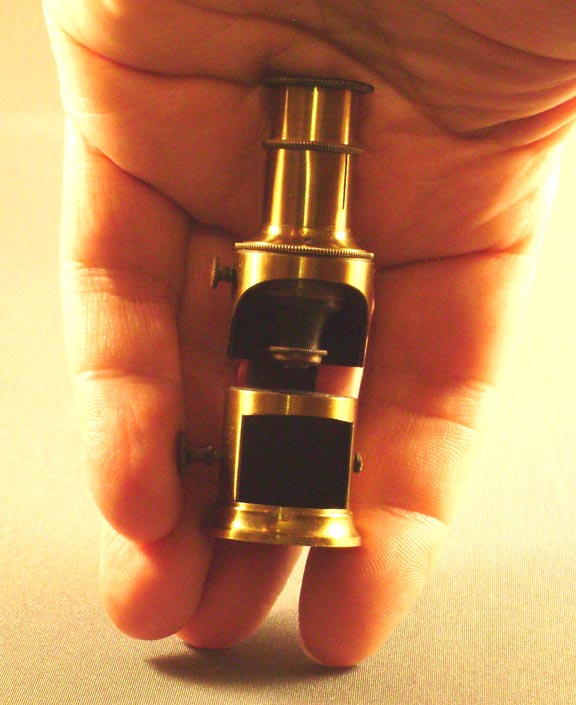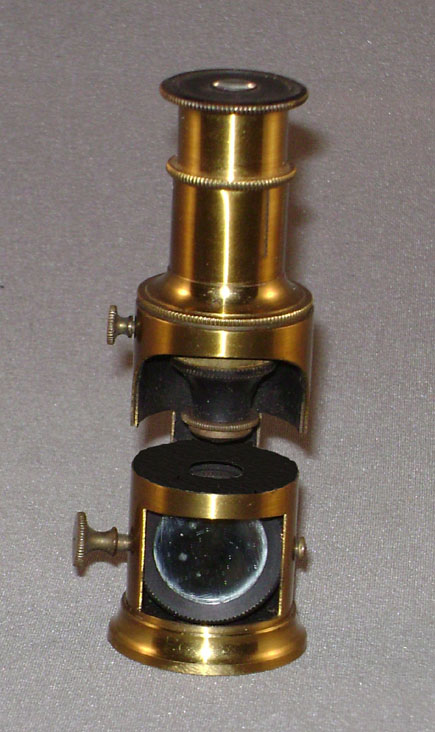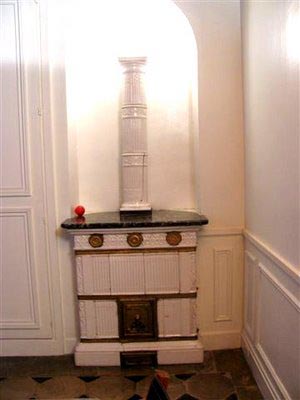| DESCRIPTION | HISTORY |



 This is an example of the diminutive "Furnace" Drum microscope, apparently first popularized in Paris about 1859 and continued to be made into the 1880s. A slightly larger version, still mounting to the dovetail on top of its box was made from about 1900 to the 1920s and 1930s. This, the early type, is very small and its small size makes it a bit difficult to use; for that reason its base dovetails into a slot on the top of its box. In this position, on the box, the entire assembly closely resembles an old furnace (as seen below), hence the name.
This is an example of the diminutive "Furnace" Drum microscope, apparently first popularized in Paris about 1859 and continued to be made into the 1880s. A slightly larger version, still mounting to the dovetail on top of its box was made from about 1900 to the 1920s and 1930s. This, the early type, is very small and its small size makes it a bit difficult to use; for that reason its base dovetails into a slot on the top of its box. In this position, on the box, the entire assembly closely resembles an old furnace (as seen below), hence the name.

 The drum microscope was apparently invented by the Germans in the first years of the 18th century, but it was Benjamin Martin who refined the design introducing it in England about 1730. The original versions
were first made of cardboard and wood, sometimes with ornate shagreen rayskin covering. The Martin Drum design
is grossly inferior to even early 19th century microscopes, but compared to others remained one of the
least expensive to produce. For this reason the production of drum microscopes, initially non-achromatic, continued for
many years and even into the twentieth century. They were, in the third quarter of the 19th century, equipped with achromatic objectives by the French, but usually nonachromatic objectives by the English.
The drum microscope was apparently invented by the Germans in the first years of the 18th century, but it was Benjamin Martin who refined the design introducing it in England about 1730. The original versions
were first made of cardboard and wood, sometimes with ornate shagreen rayskin covering. The Martin Drum design
is grossly inferior to even early 19th century microscopes, but compared to others remained one of the
least expensive to produce. For this reason the production of drum microscopes, initially non-achromatic, continued for
many years and even into the twentieth century. They were, in the third quarter of the 19th century, equipped with achromatic objectives by the French, but usually nonachromatic objectives by the English. Furnace Microscope.